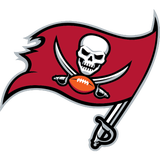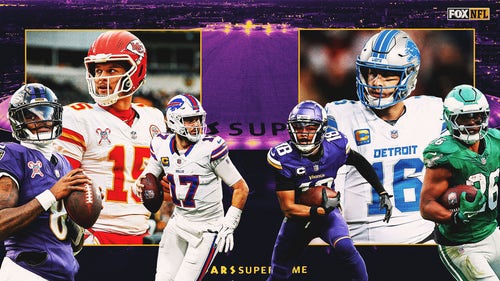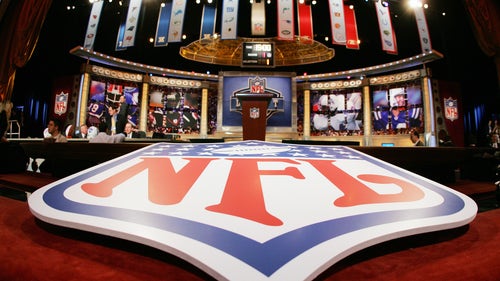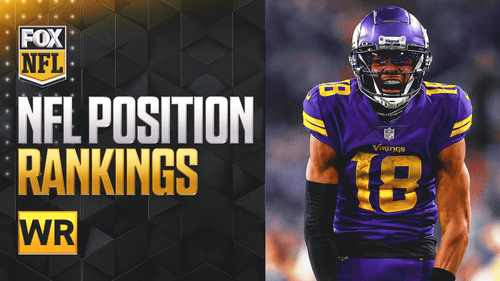
The Vikings gave the NFL a blueprint to beat the Cowboys

The Cowboys have won 11 straight games — they're red hot — and some could infer that Dallas is taking on the air of invincibility en route to home-field advantage in the playoffs.
But that's not the story that the Cowboys' 17-15 win over the Vikings told Thursday night.
No, in fact, the Vikings gave the rest of the NFL a blueprint to beat the Cowboys.
Not every team can execute at the necessary level to beat Dallas — the Vikings came close but weren't able to pull it off themselves— but Minnesota's performance should be closely studied by the Seahawks, Redskins, and even teams like the Buccaneers and Eagles, because it should be highly useful down the stretch and in the NFC playoffs.
The Vikings had a formula to win on both the offensive and defensive ends Thursday, but they were able to execute only on the latter.
But make no mistake, the Vikings' exposed some major problems with the Cowboys.
The biggest: Dallas' lack of a viable pass rush.
The Vikings' offensive line is battered and broken. They're beyond signing guys off the street at this point — those guys are getting injured too. One of the NFL's best front fives has turned into one of the league's worst — if not the worst — in the span of a few weeks thanks to a horrific stretch of luck.
But the Cowboys sacked Sam Bradford only three times Thursday night, and far more often than in recent weeks, they allowed the quarterback to throw with a clean pocket. Minnesota's running backs and receivers did little to help capitalize on those newfound opportunities — and Bradford did miss a handful of throws — but for a more capable team, the opportunity to score 30-plus points against the Cowboys' defense was there.
Even when the Cowboys rushed five, they weren't guaranteed to get pressure on the Vikings' quarterback — most teams in recent weeks have been able to find themselves in Bradford's lap within a few beats with only three- or four-man rushes.
This was not a magical turnaround by the Vikings' offensive line — they still folded under marginal pressure at times Thursday — this was the byproduct of a limp Dallas pass rush.
It was most obvious in the final 2:09 of the game, when Bradford, down 17-9, was able to work with a clean pocket or elude half-pressure with his feet on a roll-out (a concept Minnesota should have used earlier) to complete six straight passes, setting up a potential game-tying touchdown. (Minnesota score but failed to convert the two-point try.)
The Cowboys didn't do a thing to stop Bradford from driving down the field in those final two minutes. More capable offenses and quarterbacks had to notice what tempo did to the Cowboys defense Thursday. They have to be salivating.
On the flip side, the Cowboys' offense, which has been prolific this season, didn't look so impressive against the Vikings.
For the first time this season, the Cowboys' offensive line (which I have advocated for to win MVP) lost a bout to a pass rush.
Minnesota was getting pressure on Dak Prescott with four-man rushes Thursday — that's uncommon (if it's ever happened this season) — and when Minnesota added its trademark double-A-gap blitzes, the Cowboys' offensive line was even more flummoxed.
It was an uncharacteristic performance, to be sure, but it's one that a few teams in the NFL might be able to replicate.
The Cowboys had no outlet against the pressure, either. Because of Minnesota's incredible secondary, Dallas wasn't able to execute its short-pass game and the Cowboys didn't want to run into the pressure up front.
In fact, outside of a few excellent deep balls and a big Ezekiel Elliott run, the Dallas offense was buoyed by Prescott's legs — which created opportunities in the passing game and picked up the team's only third-down conversion of the game with a third-and-long scramble. (This game is why he's the quarterback.)
The blueprint to stop the Dallas offense is simple: Have a great defensive line that attacks right tackle Doug Free, have cornerbacks that you're willing to leave on an island, and bring A-gap pressure with linebackers and your free safety, which will disrupt the Cowboys' protections.
The problem: It's not so easy to execute.
Most teams don't have Xavier Rhodes, Terrance Newman, Captain Munnerlyn, and Harrison Smith in the secondary or Anthony Barr and Eric Kendricks at linebacker.
And most teams certainly do not have the Vikings' tenacious D-line.
But there are teams that aren't far off. Again, Seattle, Washington, and even Tampa Bay and Philadelphia had to be watching Thursday and think "we can take these guys." The Giants, the only team in the NFL to beat Dallas, can pull it off again too.
The Cowboys are good — really good. They're probably the best team in the NFL. But even in a loss, the Vikings proved that the hottest team in football isn't invincible.
















